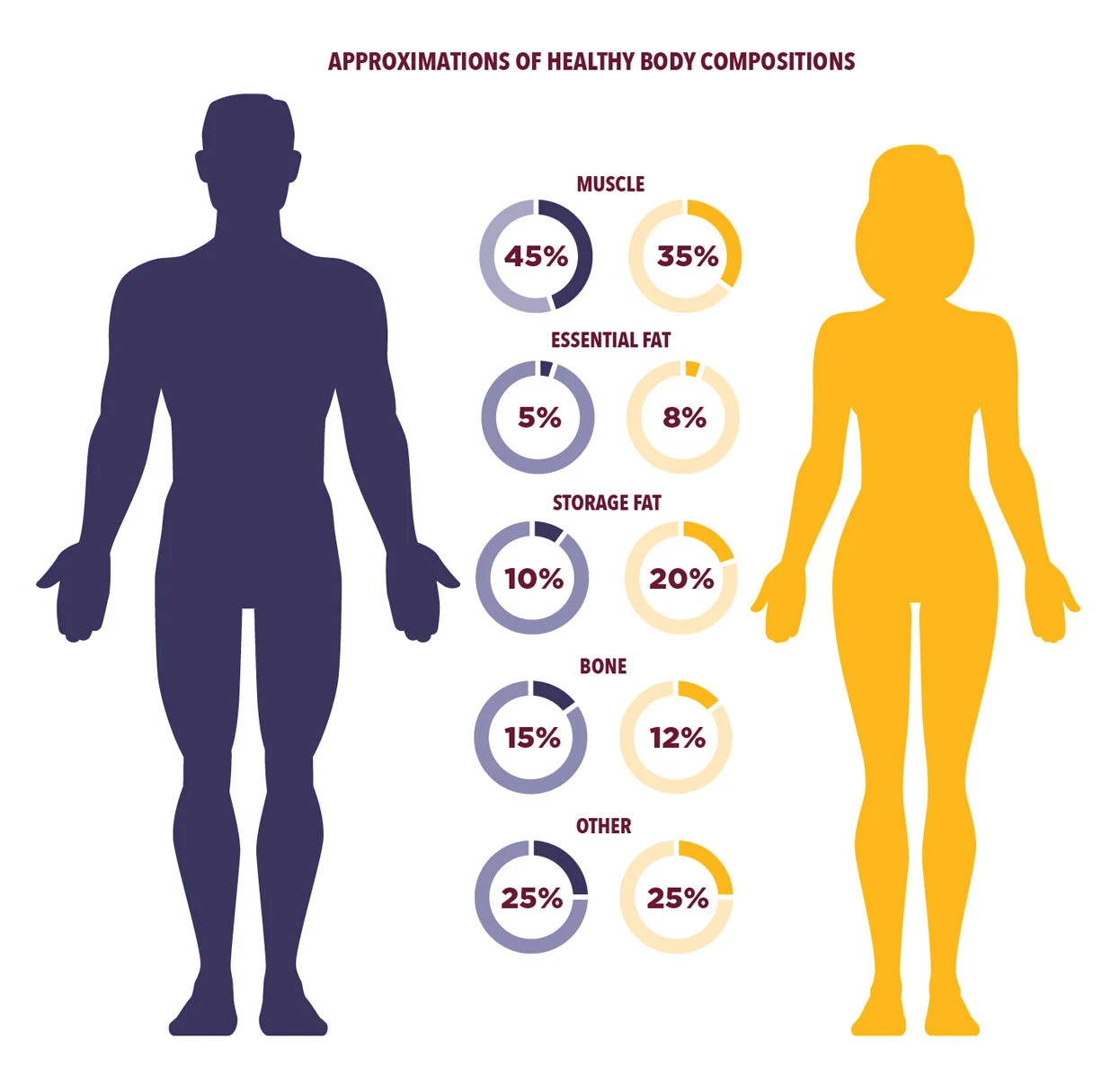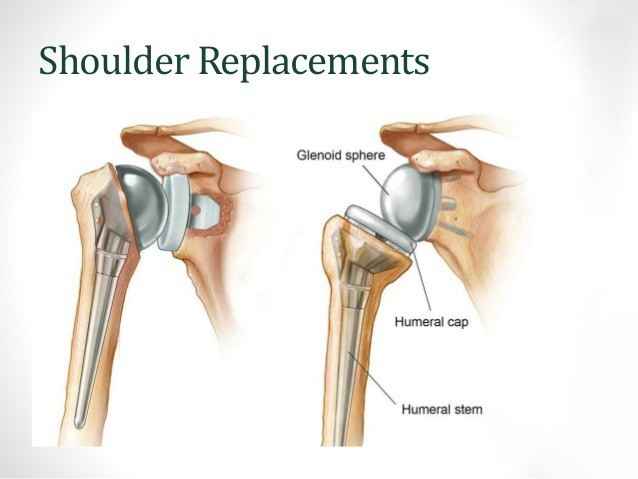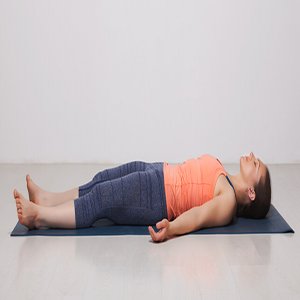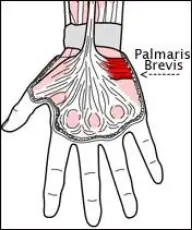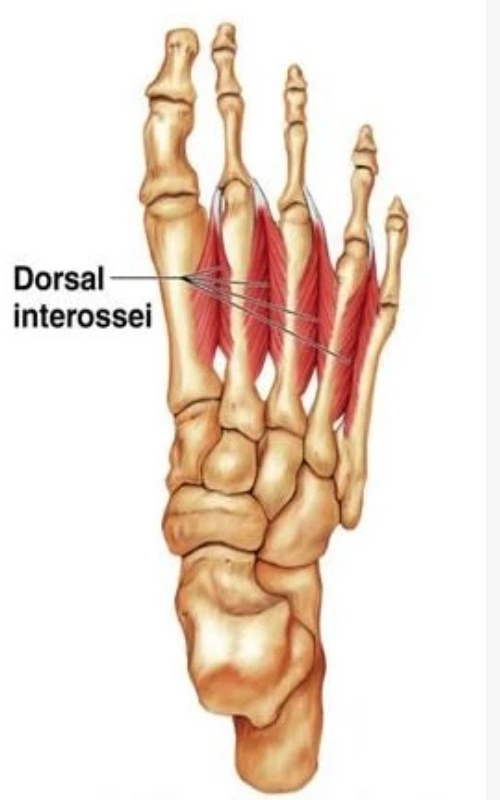Body Fat Percentage
The body fat percentage (BFP) of a person or other living thing is the total fat mass divided by the total body mass multiplied by 100. body fat includes essential body fat and body maintenance.
For survival and reproductive processes to continue, essential bodily fat is required. Because of childbirth and other significant hormonal processes, women have a larger percentage of body fat than men.
What is body fat?
Minerals, proteins, lipids, and water make up your body. Your body contains two different forms of fat.
- Skinny mass. It is sometimes referred to as an essential fat. This kind of fat is present in muscles, intestines, liver, kidneys, and bones. Your body needs the fat in certain places to function properly.
- Mass of fat. It is present in adipose tissue and is sometimes referred to as storing fat. Your body uses this sort of fat as fuel. Its warmth and comfort surround your body. It is just beneath the skin and envelops your organs.
Your health could be harmed by having too much stored fat. Chronic illnesses and disorders can be brought on by an excess of stored fat.
- These may include:
- Heart failure
- Diabetes
- Obesity
- Fatigue
Tests of one’s body composition reveal variations in muscle mass and body fat. Your internal body composition may have changed if you move less or more on the scale but your overall weight stays the same.
The body’s fat reserve is made up of fat that has accumulated in adipose tissue, which serves as protection for some of the internal organs in the chest and belly. Several methods are available to determine body fat percentage, such as measuring with a caliper or using bioelectrical impedance analysis. Body fat percentage is a measure of fitness because it is the only body measurement that directly calculates; relative physique regardless of height or weight.
A widely used body mass index (BMI) is a measure that can be used to compare obesity in people of different heights and weights. Although BMI increases greatly as obesity increases, other measures of body fat give more accurate results due to differences in body composition; For example, people with more muscle mass or larger bones have a higher BMI. As such, BMI is a useful indicator of general fitness for a large group of people, but a poor measure of individual health.
Doctors and other health care providers frequently use the term “body composition.” This is the percentage of muscle, bone, and fat that make up your body. To determine whether you are the ideal weight for your body, doctors look at your body composition. A high percentage of body fat can increase the risk of diabetes, cardiovascular disease, and other health problems. The recommended amount of body fat for various age groups can be found on many charts.
A rough indicator of body fat proportion is the body mass index or BMI. As a general rule of thumb, this is helpful. It does have limitations, though. Highly muscular people, for instance, may have a high BMI without being highly obese. To estimate health risks, body fat must be measured accurately. The typical amount of fat in healthy persons is referred to as “Ideal” body fat. You will discover how to compute your BMI and the appropriate body fat percentages for men and women based on their age in this post.
Why is body composition important?
The phrase “body composition” is used broadly in the fitness and health sector. To calculate the percentage of fat in a patient’s body weight, doctors use body composition data. This will enable them to gauge your level of health. Because someone else may be the same height and weight as you but have less muscle and more fat, body composition is crucial.
This may lead to several health issues for them. The amount of muscle and fat mass in your body is not indicated by the scale. Finding it might be aided by evaluating your body composition, though. Greater muscular mass and less fat make up a healthy body composition. A diet high in fat increases the risk of heart disease, diabetes, cancer, and other illnesses.
How Body Mass Index Is Different
When you think of body composition, body mass index (BMI) may come to mind. But BMI does not measure body fat. Doctors use BMI to determine your weight. Diverse BMI readings are associated with health conditions. However, BMI is not a very good measure to determine whether or not you’re at a healthy level because it simply displays your height and weight. Obesity is generally indicated by a high BMI greater than 30.
The proportion of body fat in you may be higher if your BMI is over thirty. Health issues including osteoarthritis, stroke, high blood pressure, and type 2 diabetes may become more likely as a result of this. You can be classified as underweight, normal, overweight, or obese by your doctor using your height and weight measured using your BMI. Though it may not provide a precise representation of body size, BMI is a measure of body fat percentage.
A worldwide nutritional metric that is more useful is BMI. When used to determine whether a person is overweight, obese, or has an eating disorder, it can be helpful. However, it is less precise and helpful when used to calculate body composition.
Determination of body composition
A doctor may assess stored fat on your skin using skin probes to determine your body fat percentage. But there are other, more precise methods for calculating body composition. Saddles made of leather. A medical practitioner will measure the thickness of your skin folds with a skin caliper. They take measurements in the typical locations of accumulated fat. A well-crafted leather saddle can exhibit remarkable precision.
However, a lot of variance can arise from human mistakes. Weighing underwater. Fat floats underwater while lean tissue sinks. You can estimate your fat mass with your underwater scale. This technique for figuring out body composition is incredibly accurate. However, specific equipment is needed.
A bodily container, this type of device calculates the volume of air that your body moves. When weighed this is a more convenient option than underwater weighing. It requires less time as well. DEXA stands for dual X-ray absorptiometry. Low-level X-rays are used in a DEXA scan to determine the amount of bone, muscle, and fat in your body. It is brief and involves a bone evaluation. bioelectrical resistance. Your body will experience an electric current throughout this examination. The speed at which it is moving is then measured.
Once the skinfold is measured, this is the most affordable method of calculating body fat. Accuracy is dependent on other circumstances, though. It works well for monitoring changes in body fat. Healthy body fat percentages are based on your age. Aim for a body fat percentage of 21-32% for women ages 20 to 39. Men ought to account for eight to nineteen percent.
The percentage of women and males in the 40–59 age range should drop by 23–33 percent and 11–21 percent, respectively. Your body fat percentage should be between 13 and 24 percent for men and between 24 and 35 percent for women if you are between the ages of 60 and 79. Compared to men, women naturally have a larger amount of body fat. As individuals become older, their body fat naturally rises.
How to count
The precise formula for determining an individual’s body fat percentage is non-existent. The best way to measure body fat is to use special equipment, usually from a doctor or personal trainer. A doctor can use liposuction to calculate the percentage of fat in certain areas of the body.
There are several other accurate ways to determine body fat. These include underwater weighing, x-rays, and ventilatory plethysmography. Measuring BMI is another way to estimate body fat. Although this method has limitations, BMI correlates well with body fat in most people. It is also faster and easier than other methods of measuring body fat.
Typical levels of body fat
Epidemiologically, the body fat percentage of an individual varies depending on gender and age.[1] There are different theoretical approaches to the relationship between body fat percentage, health, athletic ability, etc. Different authorities have therefore developed different recommendations for the ideal body fat percentage. The average body fat percentage of men ranged from 23% in 16-19 year olds to 31% in 60-79 year olds.
The average body fat percentage of females ranged from 32% in ages 8-11 to 42% in ages 60-79. But it is important to understand that women need at least 9% more fat than men to live a normal and healthy life. Data from the 2003-2006 NHANES survey showed that less than 10 percent of American adults had a “normal” body fat percentage (defined as 5-20% for men and 8-30% for women).
Results from the 2017-2018 NHANES survey show that about 43 percent of American adults ages 20 to 74 are obese (including 9 percent severely obese), and an additional 31 percent are overweight. Only 26% were either normal or underweight. In 1983, the average body fat percentage of American Olympians was 14 to 22 percent for women and 6 to 13 percent for men.
Body Fat Percentage Chart
Physiologically, women need more essential fats than men. For this reason, women require a little bit more body fat to be healthy. To support a successful pregnancy, essential body fat is required for insulation, internal organ protection, vitamin storage, and hormone regulation. With aging, body fat also varies. The following are the percentages of body fat by age group:
Age: 20 – 29
| Class | Percentage |
| dangerously low | below 14% |
| excellent | 14-16.5% |
| good | 16.6-19.4% |
| moderate | 9.5-22.7% |
| poor | 22.8-27.1% |
| dangerously high | above 27.2% |
Age 30-39
| Class | Percentage |
| dangerously low | below 14% |
| excellent | 14-17.4% |
| good | 17.5-20.8% |
| moderate | 20.9-24.6% |
| poor | 24.7-29.1% |
| dangerously high | More than 29.2% |
Age 40-49
| Class | Percentage |
| dangerously low | below 14% |
| excellent | 14-19.8% |
| good | 19.9-23.8% |
| moderate | 23.9-27.6% |
| poor | 27.7-31.9% |
| dangerously high | above 31.3% |
Age 50-59
| Class | Percentage |
| dangerously low | below 14% |
| excellent | 14-22.5% |
| good | 22.6-27% |
| moderate | 27.1-30.4% |
| poor | 30.5-34.5% |
| dangerously high | above 34.6% |
Age 60-69
| Class | Percentage |
| dangerously low | below 14% |
| excellent | 14-23.2% |
| good | 23.3-27.9% |
| moderate | 28-31.3% |
| poor | 31.4-35.4% |
| dangerously high | above 35.5% |
Body fat guidelines
Essential fat is the level at which physical and physiological health is adversely affected and below which death is certain. Body fat can affect athletic performance: A University of Arizona study found that the ideal body fat percentage for athletic performance is 12-18% for women and 6-15% for men. Bodybuilders can compete within the required body fat range.
Certified personal trainers recommend that competitors maintain a very low body fat level only during competition. However, it is unclear whether such levels will ever be achieved because (a) the means of measuring such levels are, as discussed below, fundamentally flawed and imprecise, and (b) 4-6 percent is generally considered the physiological minimum for human men.
Measurement techniques
Underwater weighing
Regardless of where they are obtained, human fat cells are almost entirely composed of pure triglycerides, with an average density of about 0.9 kilograms per liter. Most modern body composition laboratories now use a “fat-free mass” density value of 1.1 kilograms per liter. With a well-designed weighing system, body density can be determined very accurately by completely immersing a person in water and calculating the volume of water displaced by the mass of water displaced.
The buoyancy of air in the lungs and other gases in the body is corrected. If there were no errors in body density measurement, the uncertainty of fat estimation would be approximately 3.8% of body weight, which is mostly due to normal variation in body composition.
Plethysmography of whole-body ventilation
Measurement of body composition using the whole-body ventilation plethysmography (ADP) technique. Whole-body ventilation plethysmography (ADP) is a recognized and scientifically validated densitometric method for measuring human body fat percentage. ADP uses the same principles as the gold standard submersible method but represents a densitometric method based on air movement instead of water immersion.
Air movement plethysmography offers several advantages over established reference methods, including a fast, convenient, automated, noninvasive, and safe measurement process, and adaptation to different types of subjects (eg, children, obese, elderly, and disabled).
However, its accuracy falls at the extremes of body fat percentage, tending to slightly underestimate the body fat percentage of overweight and obese people (1.68-2.94% depending on the calculation method) and overestimate the percentage much more. body fat in very lean subjects (average 6.8%, with one subject overestimated by up to 13% of reported body fat – ie 2% body fat by DXA but 15% by ADP).
Near-infrared interaction
total The infrared light beam is transmitted to the biceps muscle. The light reflects off the underlying muscle and is absorbed by the fat tissue. The method is safe, non-invasive, fast, and easy to use.
Dual-energy X-ray absorptiometry
Dual Energy X-ray absorptiometry or DXA (formerly DEXA) is a newer method to assess body fat percentage and determine body composition and bone mineral density. Two X-rays of different energies are used to scan the body, one of which absorbs fat more strongly than the other.
A computer can subtract one image from another, and the difference shows the amount of fat at each point relative to other tissues. The sum of the entire image allows you to calculate the composition of the entire body.
Extensions
There are several more complex measures to determine body fat percentage more accurately. Some, called multisection models, can incorporate bone DXA measurements as well as independent measurements of body water (using the principle of dilution with isotopically labeled water) and body volume (either by water displacement or air plethysmography).
Several other components, such as total body potassium, can be measured independently. In vivo, neutron activation enables the quantification of all body elements and the use of mathematical relationships between elements measured in different body parts (fat, water, protein, etc.) to develop simultaneous equations for estimating total body composition, including body composition fat.
Measurement of average body density
Before the introduction of DXA, the most accurate method of estimating body fat percentage was to measure that person’s average density (total mass divided by total volume) and convert that to body fat percentage using a formula. Since the density of adipose tissue is lower than that of muscles and bones, it is possible to estimate fat content. This estimate is distorted by the fact that muscles and bones have different densities: for a person with a higher-than-average bone mass, the estimate is too low.
However, this method gives highly reproducible results for individuals (± 1%), unlike the methods discussed below, which can have uncertainties of 10% or more. Body fat percentage is usually calculated using two formulas (ρ means density in g/cm3):
- Brozek’s formula: BF=(4.57/ρ − 4.142) × 100
- Mr.’s formula is: BF=(4.95/ρ − 4.50) × 100
Bioelectrical Impedance Analysis
Bioelectrical Impedance Analysis (BIA) is less expensive (less than one to several hundred US dollars in 2006) but a less accurate method of evaluating body fat percentage. The general principle of BIA: two or more wires are connected to the person and the body, and a small electric current is sent through the body. Conductive resistance measures body fat between a pair of electrodes because electrical resistance varies between fat, muscle, and bone tissue.
Lean mass (muscle) is a good conductor because it contains a large amount of water (about 73%) and electrolytes, while fat is waterless and a poor conductor of electricity. Factors affecting the accuracy of this method include instrumentation, subject factors, technician skill, and the prediction equation developed to estimate fat mass. Each (bare) leg can be placed on an electrode and the current is directed up one leg, across the abdomen, and down the other leg. (For convenience, the on-board instrument also measures weight.)
Alternatively, the electrode can be held in both hands; body fat percentage is calculated by weight, so it must be measured on a scale and entered by the user. The two methods can give different percentages without being contradictory because they measure fat in different parts of the body. More advanced instruments are available for home use that have electrodes for both feet and hands. There is little room for technical error per se, but factors such as eating, drinking, and exercise must be monitored, as fluid levels are a significant source of error in the determination of electrical current flow for body fat estimation.
The user manuals for the devices usually advise against measuring immediately after drinking, eating, or exercising, or when the liquid has dried. Tools must provide information such as gender and age and use formulas that take them into account. for example, men and women store fat differently in the abdomen and thighs. Different BIA analyzers may vary. For some instruments, population-based equations are available that are reliable only for certain ethnic groups, populations, and conditions. Population-specific equations may not apply to individuals outside certain groups.
Anthropometric methods
There are different anthropometric methods for determining body fat content. The term anthropometric refers to the measurement of various parameters of the human body, such as the circumferences of different body parts or the thickness of skin folds. The majority of these techniques rely on statistical models. Several measurements are selected and applied to a sample of the population.
For each sample, the method and measurements are recorded, and the density of the sample and body, determined for example when weighed underwater with a multi-chamber body, is also recorded. density model. From this data, a formula is developed that relates body measurement to density. Because most anthropometric formulas, such as the Durnin-Womersley skinfold method, the Jackson-Pollock skinfold method, and the US Navy circumcision method, actually estimate body density and not body fat percentage, body fat percentage is obtained using another formula as described.
From Siri or Brozek in the density section above. Therefore, the percentage of body fat calculated by skinfolds or other anthropometric methods contains a cumulative error resulting from the application of two different statistical models. Therefore, these methods are inferior to directly measuring body density and using only one formula to estimate body fat percentage. One way to look at these methods is that they trade accuracy for convenience because it’s much more convenient to take a few body measurements than to submerge people in water. A major problem with all statistically derived formulas is that they must be based on a large sample of individuals to be widely used.
However, this breadth makes them inherently imprecise. The ideal statistical method of evaluating an individual is based on a sample of similar individuals. For example, a skinfold-based body density formula developed from a sample of collegiate male rowers is likely to be much more accurate in estimating male rower body density than a method developed from a sample of the general population because the sample is stratified. by age, and gender, fitness, sport and lifestyle factors. On the other hand, such a formula is not suitable for general use.
Methods of skin folds
Skinfold assessment methods are based on a skinfold test, also known as a compression test, in which the thickness of the subcutaneous fat layer is accurately measured with a picometer at several standardized points on the body. These measurements are converted to an estimated body fat percentage using an equation. Some formulas require only three measurements, while others require seven. The accuracy of these estimates depends more on the individual and their unique body fat distribution than on the number of locations measured.
In addition, it is extremely important to test at a specific location with a specific pressure. Although it may not give an accurate reading of your actual body fat percentage, it is a reliable indicator of changes in body composition over time, as long as the test is performed by the same person using the same technique. Skinfold-based estimation of body fat is sensitive to the type of thickness and technique used. This method also measures only one type of fat: subcutaneous adipose tissue (subcutaneous fat).
Two individuals can have almost identical measurements in all skinfolds, but their body fat can still differ significantly due to differences in other body fat deposits, such as visceral adipose tissue: fat in the abdominal cavity. Some models partially solve this problem by including age as a variable in the statistics and the resulting formula. Older people were found to have a lower body density based on the same skinfold measurements, implying a higher percentage of body fat. However, older, very athletic individuals may not fit this assumption, so the formulas underestimate their body density.
Ultrasound
Ultrasound is a frequently used technology for evaluating the thickness of subcutaneous fat and has proven to be accurate in determining tissue structure. A- and B-mode ultrasound systems based on tabulated values of tissue sound speed and automatic signal analysis are now used to determine fat thickness.
By measuring the thickness at several points on the body, you can calculate an estimated body fat percentage. The measurement of intramuscular fat and muscle thickness can also be done directly using ultrasound methods. Ultrasound equipment is expensive and not cost-effective for measuring body fat alone, but where the equipment is available, such as in hospitals, the additional cost of measuring body fat is minimal.
Height and circumference methods
There are also formulas to estimate body fat percentage based on an individual and weight and circumference. For example, the US Navy circumcision method compares abdominal or waist and hip measurements with neck measurements and height, and other websites claim to estimate body fat percentage using BMI conversion.
The technique is referred to as “rope and choke” in the US Navy.” Rope and choke”; a method because it is generally considered imprecise and easily falsifiable. The US Army and US Marine Corps also use the height and circumference method. Men’s measurements are taken at the waist and neck, slightly above the navel. Women are measured at the waist, neck, and hips.
Those measurements are then found in published tables, where person and height are additional parameters. This method is used because it is a cheap and convenient way to test the grease throughout the service.
Remeasurement methods have little acceptance outside the Department of Defense because they have a negative reputation compared to other methods. Methodology and accuracy should be an issue when comparing people of different physiques with artificially smaller necks than smaller ones.
About BMI
Body fat can be estimated using body mass index (BMI), which is the; mass in kilograms divided by length squared in meters. If height is measured in inches and weight is measured in pounds, multiplying the result by 703 will yield the BMI. Several formulas have been proposed for the relationship between body fat and BMI. These formulas are based on research published in peer-reviewed journals, but their correlation with body fat is only an estimate. body fat cannot be accurately determined by BMI.
Body fat can be estimated from body mass index using formulas developed by Deurenberg and colleagues. When calculating the relationship between densitometrically determined body fat percentage (BF%) and BMI, age and gender must be taken into account. Internal and external cross-validation of the prediction formulas showed that they provided valid estimates of body fat in men and women across all age groups. However, in obese individuals, the prediction formulas slightly overestimate the BF value. The prediction error is comparable to the prediction error obtained by other BF% estimation methods, such as skinfold thickness measurement and bioelectrical impedance.
The formula for children is different; The relationship between BMI and BF% in children aged 15 years and younger was found to be different from that in adults.
Child’s body fat percentage = [ 1.51 x BMI ] – [0.70 x age] – [3.6 x gender ] + 1.4
Adult body fat percentage = [1.20 x BMI] + [0.23 x age] – [10.8 x gender] – 5.4
where gender is 0 for women and 1 for men. However, unlike the internal and external cross-validation mentioned above, these formulas are unusable, at least for adults, and are presented here for illustrative purposes only. However, the following formula for adults has proven to be much more accurate, at least for adults:
[ Adult ] body fat percentage = [ 1.39 x BMI ] + [ 0.16 x age ] – [ 10.3 x gender ] – 9
where gender (gender) is 0 for women and 1 for men, representing a lower body fat percentage for men. Other indexes can also be used; The developers of the body fat index said that it provides a direct estimate of body fat percentage, but statistical studies have shown that this is not the case.
BMI
The National Institutes of Health (NIH) offers a free BMI calculator and BMI chart based on height and weight. BMI can be calculated using the following formula: (weight in pounds x 703) / (height in inches).2. To determine one’s BMI, one has to:
- Take the weight in pounds and multiply it by 703
- Multiply their height in inches by yourself
- Divide the answer from step 1 with the answer from step 2 to calculate their BMI
- To interpret
Last number BMI:
- below 18.5 means the person is underweight
- 18.5 to 24.9 means the person is “normal” or moderate
- 25-29.9 means the person is overweight
- More than 30 means the person is obese
Problems and limitations
Many estimates of body fat show that people have a higher body fat percentage than recommended by official guidelines. People can be healthy, but they can also have an abnormal amount of fat.
These variations make one wonder if the recommended body fat percentages are indeed achievable. Race and ethnicity also have an impact on the average body fat percentage. This implies that there can be racial or cultural biases in the recommended body fat percentage.
The use of BMI to evaluate general health or body fat is another issue. BMI does not account for lean muscle mass, body fat proportion, or bone mass; it solely considers weight. When determining body fat percentage and general health, these variables are crucial.
A person with great muscular mass and bone density, for instance, may have a high body fat percentage based on their BMI. The location of fat on the body cannot also be estimated by BMI. The distribution of body fat influences general health as well.
For instance, fat in the abdomen poses a higher risk to one’s health than fat in other places. The methods for calculating body fat and BMI have numerous limitations. Health issues do not necessarily result from a high body fat percentage or BMI.
Questions for the doctor
A few useful questions to ask your doctor are:
- How can I determine my body fat % in the most precise way possible?
- Does my health indicate that a body fat percentage test would be helpful?
- What can I do to be healthier?
- Am I moderate?
- What is the recommended body fat percentage based on my age, gender, and level of activity?
Summary
It’s challenging to calculate body fat percentage accurately at home. On the other hand, body fat levels can be roughly estimated using fat meters or BMI computations. Body fat is a useful indicator of general health.
However, there are limitations to its use. Instead of focusing only on body fat, it is better to prioritize an overall healthy lifestyle. More exercise, regular strength training, and a balanced diet are good ways to stay healthy.
FAQs
How is the amount of body fat calculated?
The cheapest, most convenient, and most portable way to measure body fat in particular parts of the body is with calipers. Pinch the skin in three different places on your body (the thigh, chest, and abs are the most popular ones), separate the muscle from the fat, and use the calipers to measure the fold.
How much percentage of body fat is possible?
Men normally have between 2 and 5% of their body weight in essential fat, but women typically have between 10 and 13 percent. Men’s healthy body fat ranges are generally 8–19%, whereas women’s healthy ranges are 21-33%.
Why does body fat matter?
The body uses fat as a source of energy and a store of energy, which aids in regulating body temperature. Lipids and fats also have a role in the synthesis and control of some hormones, including steroid hormones.
References
Body fat percentage. (2024, January 19). Wikipedia. https://en.wikipedia.org/wiki/Body_fat_percentage
What Is Body Composition? (2021, June 4). WebMD. https://www.webmd.com/fitness-exercise/what-is-body-composition
Villines, Z. (2023, November 27). Body fat percentage charts for men and women. https://www.medicalnewstoday.com/articles/body-fat-percentage-chart#limitations
Shah, D. (2023, December 24). Percentage of Women’s Body Fat – A Guide to Individuality. Mobile Physiotherapy Clinic. https://mobilephysiotherapyclinic.in/percentage-of-womens-body-fat/

